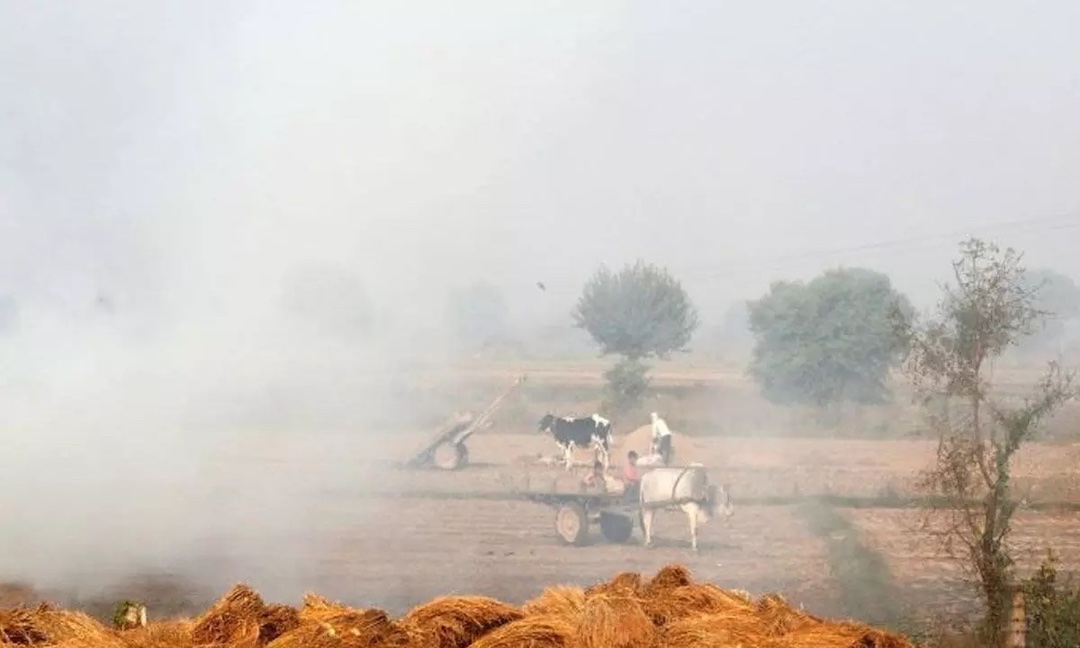Neglected Rural Air Pollution in India Poses Health Risks on Par with Urban Areas – The CSR Journal
Neglected Rural Air Pollution in India Poses Health Risks on Par ... thecsrjournal


Neglected Rural Air Pollution in India Poses Health Risks on Par with Urban Areas

Introduction
Air pollution remains a significant environmental challenge in India, affecting both urban and rural areas. Recent data from 2022 revealed that the average annual levels of ultrafine particulate matter (PM) 2.5, a highly toxic air pollutant, were equally poor in rural India as in urban areas. This revelation has raised concerns about the Union government’s focus on investing in selected urban regions to combat toxic air pollution while neglecting the equally severe pollution in rural areas.
Similar Pollution Concentration in Urban and Rural Areas
The analysis conducted by Climate Trends reveals an alarming similarity in PM 2.5 pollution concentration between urban and rural areas in India. Despite the prevailing belief that air pollution is primarily an urban problem, the data challenges this notion. The average annual PM 2.5 level of 46.4 microgrammes per cubic meter in rural India is only slightly lower than the urban level of 46.8 microgrammes per cubic meter. It is important to note that both these levels significantly exceed the national limit of 40 microgrammes per cubic meter.
These findings raise questions about the effectiveness of the National Clean Air Plan (NCAP), which was launched in 2019 with the objective of reducing PM 2.5 and PM 10 concentrations by 20-30% by 2024. The fact that PM 2.5 pollution levels have remained consistently high in both urban and rural areas since 2017 suggests that the current strategies and measures under the NCAP may not be sufficient to combat air pollution effectively.
One of the key concerns is the neglect of rural areas in addressing air pollution. While the NCAP has allocated substantial funds, amounting to approximately Rs 9,000 crores, to 131 non-attainment cities that consistently exceed national air pollution limits, rural regions have been largely overlooked. This disparity in resource allocation hampers efforts to comprehensively control air pollution and safeguard public health in rural areas.
One of the significant challenges in rural areas is the lack of on-ground pollution measuring mechanisms and monitoring infrastructure. Unlike urban areas, where pollution monitoring stations are relatively more prevalent, rural regions often lack the necessary infrastructure to measure and monitor air quality accurately. This absence of monitoring mechanisms makes it difficult to gather real-time data on pollution levels, identify pollution sources, and devise targeted interventions.
The absence of pollution monitoring infrastructure in rural areas not only hampers efforts to track pollution levels but also limits the awareness and understanding of the severity of air pollution among rural communities. Without access to timely and accurate information on air quality, residents may not fully comprehend the health risks associated with air pollution or take necessary precautions to protect themselves.
Furthermore, the limited focus on rural areas undermines the government’s comprehensive efforts to control air pollution. Rural regions are home to a significant portion of the population, including vulnerable groups such as farmers, labourers, and marginalized communities. Neglecting these areas perpetuates environmental injustice and exacerbates health inequalities, as these populations are disproportionately affected by the adverse health effects of air pollution.
Health Risks Associated with PM 2.5
PM 2.5, with its fine particles measuring 2.5 micrometres or smaller, poses a grave threat to public health. These tiny particles have the ability to penetrate deep into the respiratory system, reaching the lungs and even entering the bloodstream. Prolonged exposure to high levels of PM 2.5 has been associated with a range of adverse health effects.
One of the primary health risks associated with PM 2.5 is respiratory problems. The fine particles can irritate and inflame the airways, leading to symptoms such as coughing, wheezing, and shortness of breath. Individuals with pre-existing respiratory conditions, such as asthma or chronic obstructive pulmonary disease (COPD), are particularly vulnerable to the exacerbation of their symptoms due to PM 2.5 exposure.
Moreover, exposure to PM 2.5 has been strongly linked to cardiovascular diseases. The fine particles can enter the bloodstream and trigger systemic inflammation, oxidative stress, and the formation of arterial plaque. These mechanisms increase the risk of heart attacks, strokes, and other cardiovascular problems. Individuals with heart conditions, high blood pressure, or diabetes are at a heightened risk of experiencing adverse cardiovascular effects due to PM 2.5 exposure.
The detrimental effects of PM 2.5 extend beyond the respiratory and cardiovascular systems. Studies have shown a clear association between PM 2.5 exposure and an increased risk of lung cancer. The fine particles can carry carcinogens and other toxic compounds into the lungs, promoting the development of cancerous cells over time.
Furthermore, long-term exposure to high levels of PM 2.5 has been linked to premature death. The combined health impacts of respiratory problems, cardiovascular diseases, and cancer contribute to a reduced lifespan for individuals exposed to significant levels of PM 2.5 pollution.
The health risks associated with PM 2.5 are not confined to urban areas but also extend to rural regions. In states such as Delhi, Bihar, Haryana, Uttar Pradesh, Rajasthan, and West Bengal, where rural PM 2.5 pollution levels are notably high, the rural population faces severe health risks. Alarming statistics from a previous analysis by the Centre for Science and Environment (CSE) highlight the magnitude of the problem.
On average, rural residents in India lose over five years and two months of their lifespan due to exposure to air pollution, while urban dwellers lose about four years and five months. The health impact is particularly severe in certain regions. For instance, rural residents in Uttar Pradesh experience a staggering loss of over eight years of lifespan, while those in Bihar and Haryana lose over seven years on average. These figures underscore the urgency of addressing air pollution in rural areas and implementing effective mitigation measures.
Experts Call for Action
Experts and researchers have underscored the urgent need for a broader network of air pollution monitoring systems in rural and non-urban regions. Professor Abhijit Chatterjee of Bose Institute emphasizes that addressing air pollution in rural areas is crucial to resolving the country’s air pollution crisis. The current emphasis on
SDGs, Targets, and Indicators
-
SDG 3: Good Health and Well-being
- Target 3.9: By 2030, substantially reduce the number of deaths and illnesses from hazardous chemicals and air, water, and soil pollution and contamination.
- Indicator: Average annual levels of ultrafine particulate matter (PM) 2.5 in rural and urban areas.
-
SDG 11: Sustainable Cities and Communities
- Target 11.6: By 2030, reduce the adverse per capita environmental impact of cities, including by paying special attention to air quality and municipal and other waste management.
- Indicator: Average annual levels of ultrafine particulate matter (PM) 2.5 in urban areas.
-
SDG 13: Climate Action
- Target 13.1: Strengthen resilience and adaptive capacity to climate-related hazards and natural disasters in all countries.
- Indicator: Average annual levels of ultrafine particulate matter (PM) 2.5 in rural and urban areas.
Table: SDGs, Targets, and Indicators
| SDGs | Targets | Indicators |
|---|---|---|
| SDG 3: Good Health and Well-being | Target 3.9: By 2030, substantially reduce the number of deaths and illnesses from hazardous chemicals and air, water, and soil pollution and contamination. | Average annual levels of ultrafine particulate matter (PM) 2.5 in rural and urban areas. |
| SDG 11: Sustainable Cities and Communities | Target 11.6: By 2030, reduce the adverse per capita environmental impact of cities, including by paying special attention to air quality and municipal and other waste management. | Average annual levels of ultrafine particulate matter (PM) 2.5 in urban areas. |
| SDG 13: Climate Action | Target 13.1: Strengthen resilience and adaptive capacity to climate-related hazards and natural disasters in all countries. | Average annual levels of ultrafine particulate matter (PM) 2.5 in rural and urban areas. |
Analysis
-
Which SDGs are addressed or connected to the issues highlighted in the article?
The issues highlighted in the article are connected to SDG 3: Good Health and Well-being, SDG 11: Sustainable Cities and Communities, and SDG 13: Climate Action.
-
What specific targets under those SDGs can be identified based on the article’s content?
Based on the article’s content, the specific targets that can be identified are Target 3.9 under SDG 3, Target 11.6 under SDG 11, and Target 13.1 under SDG 13.
-
Are there any indicators mentioned or implied in the article that can be used to measure progress towards the identified targets?
Yes, the article mentions the average annual levels of ultrafine particulate matter (PM) 2.5 in rural and urban areas as an indicator to measure progress towards the identified targets.
Behold! This splendid article springs forth from the wellspring of knowledge, shaped by a wondrous proprietary AI technology that delved into a vast ocean of data, illuminating the path towards the Sustainable Development Goals. Remember that all rights are reserved by SDG Investors LLC, empowering us to champion progress together.
Source: thecsrjournal.in

Join us, as fellow seekers of change, on a transformative journey at https://sdgtalks.ai/welcome, where you can become a member and actively contribute to shaping a brighter future.







